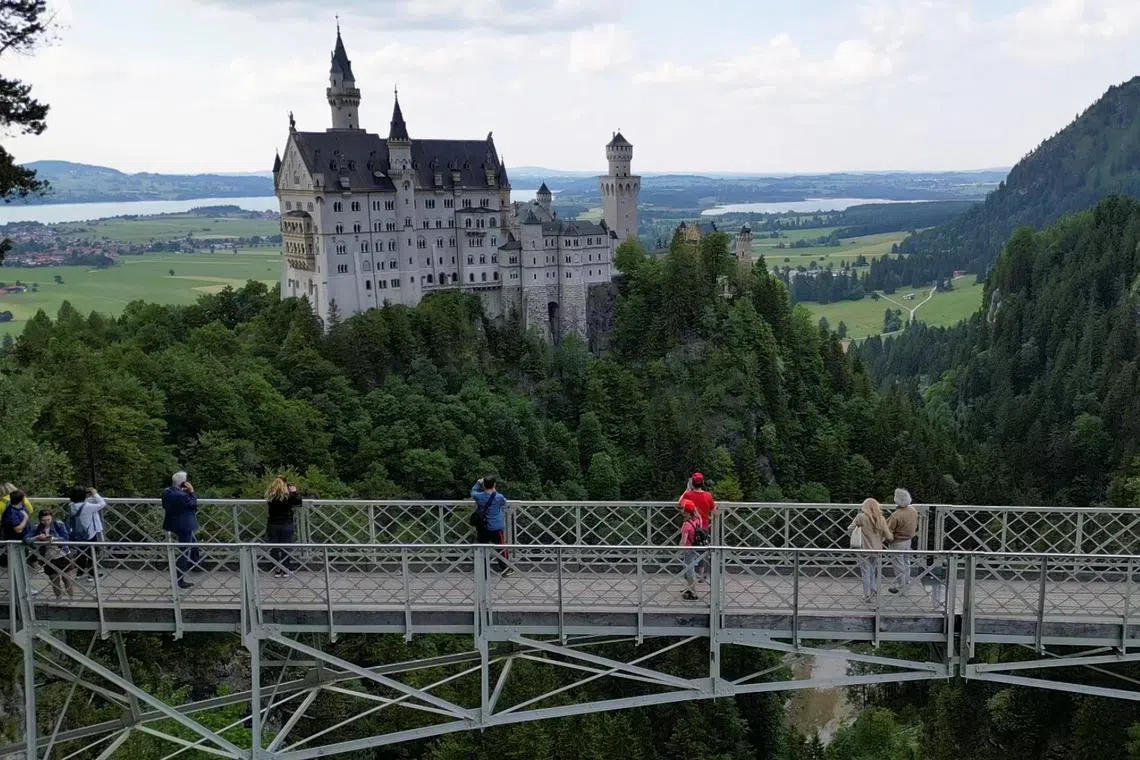Bavaria’s fairy-tale palaces in Germany granted world heritage status
Sign up now: Get ST's newsletters delivered to your inbox

Bavaria's Neuschwanstein castle is now one of the most popular tourist sites in Germany.
PHOTO: REUTERS
Follow topic:
- Bavaria's Neuschwanstein, Herrenchiemsee, and Linderhof castles are now Unesco World Heritage sites.
- King Ludwig II's 19th-century palaces are recognised for architectural and cultural significance.
- Neuschwanstein, inspiring the Disney castle, attracts 1.4 million annual visitors; Markus Soeder calls it "Bavaria's landmark".
AI generated
BERLIN – Bavaria's fairy-tale royal castles, including Neuschwanstein, Herrenchiemsee and Linderhof, have been added to the Unesco World Heritage list, officials said on July 12.
The decision, made by the Unesco World Heritage Committee during its 47th session in Paris, is recognising the architectural and cultural significance of King Ludwig II's 19th-century palaces.
Construction began at Neuschwanstein in 1869, but the project was never completed, and building work halted when the Bavarian king died in 1886.
The castle is now one of the most popular tourist sites in Germany, receiving roughly 1.4 million visitors per year. It inspired media conglomerate Disney’s castle logo after US producer Walt Disney visited it in the 1950s.
Bavarian state premier Markus Soeder described the designation as a “worldwide accolade”, calling Neuschwanstein “Bavaria’s landmark par excellence”.
“For our fairy-tale castles, a fairy tale comes true,” he said in a statement.
Neuschwanstein combined great art and culture, and also a bit of “kitsch and cliche”, he said.
“When seeing the castle, some people worldwide may think of Disney – but no: Neuschwanstein is and remains the original from Bavaria.” REUTERS

